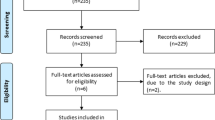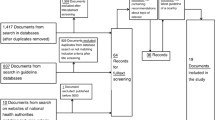Abstract
It is important to find interventions that will reduce the frequency and severity of exacerbations of COPD, because of their effect on morbidity and healthcare expenditure. A Cochrane systematic review included 23 studies that had evaluated the effects of treatment with mucolytic agents in patients with chronic bronchitis or COPD. Mucolytic treatment was associated with a significant reduction of 0.79 exacerbations per patient per year compared with placebo, a 29% decrease. Patients who received treatment with mucolytic agents were twice as likely to remain exacerbation-free in the study period than if they had received placebo, with six patients needing regular treatment with mucolytic agents for 3–6 months to achieve one less exacerbation over that time. Treatment with mucolytic agents resulted in nearly 7 days less illness per patient per year.
How mucolytic agents work is unknown, although they may reduce exacerbations by altering mucus production, antioxidation, or antibacterial or immunostimulatory effects. They do not appear to affect the decline in lung function that occurs in COPD. The treatment appears to be without any adverse effects, apart from the need to take oral medication daily. Cost-effectiveness analysis suggests that the point at which the costs of treatment and non-treatment were equal was 1.2 less exacerbations per year. This is higher than the effect observed in the Cochrane review, suggesting that treating everyone with COPD with mucolytic agents would not be cost effective. Those with more frequent and severe exacerbations appear to have the most to gain.
Similar content being viewed by others
References
Stockley RA, O’Brien C, Pye A, et al. Relationship of sputum color to nature and outpatient management of acute exacerbations of COPD. Chest 2000; 117: 1638–45
Seemungal TA, Donaldson GC, Paul EA, et al. Effect of exacerbation on quality of life in patients with chronic obstructive pulmonary disease. Am J Respir Crit Care Med 1998; 157: 1418–22
Anthonisen NR, Manfreda J, Warren CP, et al. Antibiotic therapy in exacerbations of chronic obstructive pulmonary disease. Ann Intern Med 1987; 106: 196–204
Thompson WH, Nielson CP, Carvalho P, et al. Controlled trial of oral prednisone in outpatients with acute COPD exacerbation. Am J Respir Crit Care Med 1996; 154: 407–12
Friedman M, Hilleman DE. Economic burden of chronic obstructive pulmonary disease. Pharmacoeconomics 2001; 19(3): 245–54
Poole PJ, Black PN. Mucolytic agents for chronic bronchitis or chronic obstructive pulmonary disease. Available in The Cochrane Library [database on disk and CD ROM]. Updated quarterly. The Cochrane Collaboration; issue 2. Oxford: Update Software, 2003
Fletcher C, Pride NB. Definitions of emphysema, chronic bronchitis, asthma, and airflow obstruction: 25 years on from the Ciba symposium. Thorax 1984; 39: 81–5
Pauwels RA, Buist AS, Calverley PM, et al. Global strategy for the diagnosis, management and prevention of chronic obstructive pulmonary disease. NHLBI/WHO Global Initiative for Chronic Obstructive Lung Disease (GOLD) workshop summary. Am J Respir Crit Care Med 2001; 163: 1256–76
Moher D, Jadad AR, Tugwell P. Assessing the quality of randomized controlled trials: current issues and future directions. Int J Technol Assess Health Care 1996; 12: 195–208
Burge PS, Calverley PM, Jones PW, et al. Randomised, double blind, placebo controlled study of fluticasone propionate in patients with moderate to severe chronic obstructive pulmonary disease: the ISOLDE trial. BMJ 2000; 320: 1297–303
Stey C, Steurer J, Bachmann S, et al. The effect of oral N-acetyl cysteine in chronic bronchitis: a quantitative systematic review. Eur Respir J 2000; 16: 253–62
Grandjean EM, Berthet P, Ruffmann R, et al. Efficacy of oral long-term N-acetylcysteine in chronic bronchopulmonary disease: a meta-analysis of published double-blind, placebo-controlled clinical trials. Clin Ther 2000; 22(2): 209–21
Rogers DF. Mucoactive drugs for asthma and COPD: any place in therapy?. Expert Opin Investig Drugs 2002; 11(1): 15–35
Vestbo J, Prescott E, Lange P. Association of chronic mucus hypersecretion with FEV1 decline and chronic obstructive pulmonary disease morbidity. Am J Respir Crit Care Med 1996; 153: 1530–5
Repine JE, Bast A, Lankhorst I. Oxidative stress in chronic obstructive pulmonary disease. Am J Respir Crit Care Med 1997; 156: 341–57
Kasielski M, Nowak D. Long-term administration of N-acetylcysteine decreases hydrogen peroxide exhalation in subjects with chronic obstructive pulmonary disease. Respir Med 2001; 95: 448–56
Riise GC, Larsson S, Larsson P, et al. The intrabronchial microbial flora in chronic bronchitis patients: a target for N-acetylcysteine therapy? Eur Respir J 1994; 7: 94–101
van Overveld EJ, Vermiere PA, De Backer WA. Induced sputum of patients with chronic obstructive pulmonary disease (COPD) contains adhesion-promoting, therapy-sensitive factors. Inflamm Res 2000; 49: 8–13
Oddera S, Silvestri M, Sacco O, et al. N-acetylcysteine enhances in vitro the intracellular killing of Staphlyococcus aureus by human alveolar macrophages and blood polymorphonuclear leukocytes and partially protects phagocytes from self-killing. J Lab Clin Med 1994; 124: 293–301
de Flora S, Grassi C, Carati L. Attenuation of influenza-like symptomatology and improvement of cell mediated immunity with long term N-acetyl cysteine treament. Eur Respir J 1997; 10: 1535–41
Collet JP, Shapiro P, Ernst P, et al. Effects of an immunostimulating agent on acute exacerbations and hospitalizations in patients with chronic obstructive pulmonary disease. The PARI-IS Study Steering Committee and Research Group. Am J Respir Crit Care Med 1997; 156: 1719–24
Grandjean EM, Berthert P, Ruffman R, et al. Cost-effectiveness analysis of oral N-acetyl cysteine as a preventive treatment in chronic bronchitis. Pharmacol Res 2000; 42: 39–50
Parr GD, Huitson A. Oral fabrol (oral n-acetyl-cysteine) in chronic bronchitis. Br J Dis Chest 1987; 81: 341–8
Acknowledgements
No sources of funding were used to assist in the preparation of this manuscript. The authors have no conflicts of interest that are directly relevant to the content of this manuscript.
Author information
Authors and Affiliations
Corresponding author
Rights and permissions
About this article
Cite this article
Poole, P.J., Black, P.N. Preventing Exacerbations of Chronic Bronchitis and COPD. Am J Respir Med 2, 367–370 (2003). https://doi.org/10.1007/BF03256664
Published:
Issue Date:
DOI: https://doi.org/10.1007/BF03256664




